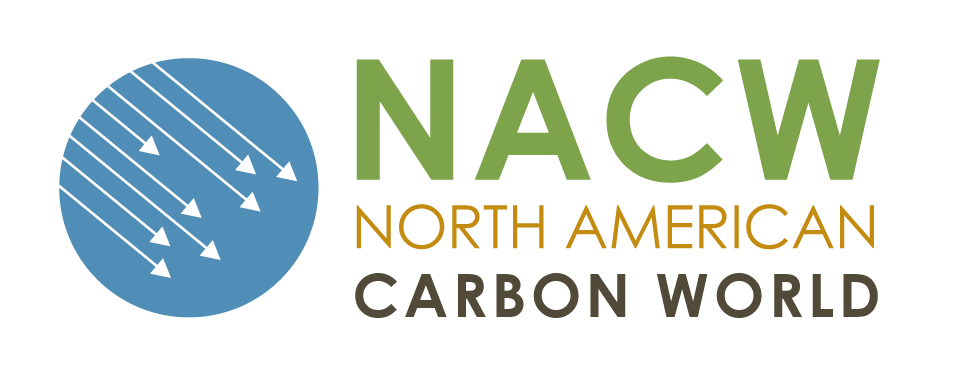California’s Cap-and-Trade Program is not limited to the purchase and surrender of allowances and credits. So far, billions of dollars generated from the program have been put to work reducing more emissions, strengthening the economy, and improving public health and the environment with a focus on disadvantaged communities.
As part of the NACW 2020 Virtual Series, experts working on and benefiting from the California Climate Investments program gathered to share insights on the work that has been happening under the initiative. We’re pleased to share key insights from panelists: Alvaro Sanchez, Environmental Equity Director, The Greenlining Institute; Coral Abbott, Program Analyst, Regional Climate Collaboratives Program, California Strategic Growth Council; Amar Azucena Cid, Branch Chief, Low Carbon Transit Operations Program, California Dept of Transportation; Bailey Smith, Staff Air Pollution Specialist, California Air Resources Board; and Sara Webber, Co-founder and Executive Director, Berkeley Food Network.
- Through November 2019 a total of $12.7 billion have been appropriated by the legislature to advance the California Climate Investments program.
- 57 percent of implemented dollars (roughly around $3 billion) have benefited priority populations.
- $5.3 billion in implemented funds have leveraged an additional $21.7 billion from other sources.
- To date implemented California Climate Investment projects have provided direct support to 3,000 full-time equivalent jobs and more than 1,300 job training opportunities. Agencies report that 1,800 of those jobs and training opportunities were provided to priority populations.
- The total GHG reductions of the investment suite over their lifetime equals to over 44 million metric tons of carbon.
California Climate Investments is a statewide initiative funded from the state’s Cap-and-Trade auction proceeds that puts billions of dollars to work reducing greenhouse gas emissions, strengthening the economy and improving public health and the environment—particularly in disadvantaged communities. The California Air Resources Board (CARB) holds quarterly auctions of greenhouse gas emission allowances and deposits the revenue into the state’s Greenhouse Gas Reduction Fund. Then the governor and legislature work together to make appropriations from the GGRF, consistent with the framework and requirements set by legislation, to individual state agencies to administer specific programs.
A subset of programs, mostly in the transportation sector, have ongoing multi-year funding commitments and receive a set percentage of each quarterly auction. Most programs, however, are funded annually through a deliberative budget process. Funds have gone to over 20 state agencies to fund over 60 unique programs. Each individual agency designs their program and selects individual projects that meet the agency’s selection criteria to prioritize projects consistent with the objectives of their program. Proceeds from the Cap-and-Trade Program support programs and projects that not only reduce greenhouse gas (GHG) emissions in the State, but also deliver major economic, environmental, and public health benefits to the most disadvantaged communities. By legislation, at least 35 percent of investments must be made in disadvantaged communities and low-income communities and households. In actuality, a much larger percentage (57 percent) of funding benefits priority populations.
The breadth of the program is expansive. California Climate Investments provide funding across all sectors of the economy, including affordable housing, renewable energy, public transportation, zero-emission vehicles, environmental restoration, wildfire prevention, more sustainable agriculture, recycling and much more. State agencies receiving appropriations develop and implement a suite of programs within three priority areas: transportation & sustainable communities (SB862 established continuous appropriates of 60 percent of available GGRF proceeds for certain transportation and sustainable communities programs including public transit and affordable housing); clean energy & energy efficiency (under SB350, the state goal is to double building energy efficiency and increase renewable energy to 50 percent by 2030); and natural resources & waste diversion (such wildfire programs, urban and community forestry, manure management, drinking water, healthy soils, wetlands restoration and more).
Equity is a key focus of the CCI program
“California is experimenting with equity practices more than any other state in the country and the climate investments program is one in which equity is showing up in really meaningful ways,” said Alvaro. “Equity is not equality. Equity acknowledges that people are starting from different places, not because of how hard they worked or how successful they are, but because those communities have faced systems of oppression including racism, white supremacy, and imperialism that have hindered their ability to thrive economically. So those communities deserve additional support and systems to get them to par with their counterparts. And equity is not only a commitment, equity is a practice. An equity commitment without a roadmap on how to achieve the equity outcome becomes a broken promise. With the California Climate Investments program, we’re seeking to be comprehensive, holistic, equitable. We want to emphasize rectifying some of the wrongs of how we got here, and moving forward we want to change dynamics so that those injustices don’t persist in a clean energy environment.”
“When we talk about resilience to climate change, we know that the most vulnerable communities and community members are going to be hit the hardest, so it’s really important that we continue to make investments in disadvantaged and low-income communities for our overall resilience as a state. And we should continue to make investments in this way, and it should be something that others look to if they’re thinking about developing their own programs focused on climate resilience,” said Coral.
“Each individual agency really carefully designs their program to make sure that they’re targeting priority communities. There’s a variety of strategies to try to get funds to priority populations – eligibility requirements, extra scoring points on applications, outreach, reduce match funding requirements. Each of the investments that are counted towards these goals are really highly scrutinized,” said Bailey. “Thinking only of getting the biggest GHG reduction per dollar as a sole focus of the program really overlooks how the program can address historical inequities and benefit those overburdened communities. The capacity of CCI to really achieve multiple benefits is one of the greatest successes, so we prioritize those multiple benefits and the equity piece.”
Investing in projects that reduce greenhouse gas emissions transform California communities with a wide range of co-benefits and quality of life improvements.
“The California Strategic Growth Council focuses for the most part on the greater built environment, with a particular focus on supporting communities to develop healthy neighborhoods while at the same time helping to meet state climate goals. One of our largest CCI programs is the Affordable Housing and Sustainable Communities Program that makes investments in affordable housing, transit, active transportation, and urban greening in an integrated manner to build healthier communities while simultaneously reducing vehicle miles traveled, which is one of the largest sources of emissions in the state and whose emission impacts end up being felt the most by disadvantaged and low-income community members,” said Coral. “Infill and conservation don’t immediately necessarily seem like an equity strategy but because personal vehicle use is such a large source of emissions, our goal is to develop healthy livable and dense communities, while simultaneously preventing growth into natural working lands.”
“One thing I want to share is the breadth of the program. What we’re demonstrating with CCI is that there are so many ways that you can reduce emissions—from restoring wetlands to applying compost to ag land. And we’re just showing that there’s all of these ways that we can achieve benefits while also achieving all of these other benefits like clean water and climate resiliency. We have this whole toolbox of tools to use to achieve our climate goals, but we can do that while gaining so much more than just the carbon benefits,” said Bailey.
Community engagement empowers disadvantaged communities and ensures climate solutions meet the needs of the neighborhood.
“A huge through-line in our work is meaningful community engagement and leadership. Since many of our investments are intended to benefit disadvantaged communities whose members have historically been left out of the decision-making process for land-use decisions and research needs, we find it critical to bring in and center community voices through our programs,” said Coral. “We hope that going through the process of applying to and implementing these programs can help local governments, industry, and academia develop processes to do this engagement outside of our grant opportunities.”
“The Low Carbon Transit Operations Program (LCTOP) is a statewide funded program with an annual appropriation of 5 percent of the total CCI, averaging around $100-150 million a year. LCTOP projects include new and expanded or enhanced transit, such as greater service frequency or new lines, free or reduced transit passes and vouchers, zero-emission vehicles infrastructure capital projects, station improvements or amenities such as solar lighting or shelter to protect against inclement weather. Community members provide input and ask for particular transit improvements.” said Amar. “With CCI, we have a starting template here that could be replicated statewide or nationwide. Really prioritizing our communities that have been historically harmed by racist policies that impact the health and well-being of our communities is something that we need to take a deep dive into, making sure that we’re centering the programs to really speak to what communities actually want.”
The COVID pandemic shows the great need in disadvantaged communities for food and employment security.
“Our grant comes through the food waste prevention and rescue grant and we provide free food to people who are food insecure. Food recovery from grocery stores and even restaurants and farmers is not unusual—it’s been around for 4 decades, but now there’s more awareness of the need for this kind of programming in our attempts to reduce GHG emissions,” said Sara. “Our work has been very impacted by the COVID-19 situation. We’ve seen the number of people we are serving grow by three times in the last eight weeks. There’s huge need that’s going to continue for quite a while. Food is going to be more needed than ever.”
“The role of CCI to contribute to climate inequity issues seems more important than ever. We’ve seen what these funds can do and especially what they can do for the people who are hardest hit,” said Bailey. “We’re looking at the data of the programs we have, what are the outcomes and how we can make sure that we’re supporting those essential programs that are providing economic resiliency and equity benefits. We collect a lot of information about what programs are supporting jobs or have the potential to support jobs across the economy. CCI is really effective in supporting workforce development and economic development so this is an opportunity to use this as part of the recovery effort for a broader economic recovery package.”
Tags: California, cap and trade, NACW




Comments are closed here.